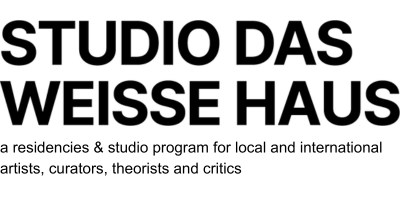Weekly Conversations… with Jackie Grassmann & Inga Thiele

In this week we are talking to our two Studio Artists, Jackie Grassmann and Inga Charlotte Thiele, who are more than just sharing a studio at Hegelgasse 14.
Interview by Juliana Furthner
You recently initiated the format Salon. What are the ideas and intentions behind that?
Actually, I started the Salon evenings already in Berlin in 2015. Initially it was thought of as an experimental platform and safe space for Woman* in the artworld only. There was the desire to create a space that is differently structured than other spaces within the artworld. When I moved to Vienna, I brought the Salon with me. The idea significantly developed further and changed with meeting Inga and Leonie Huber, at the Academy of Fine Arts Vienna. Since then it was mainly us organizing the Salons, together with our peers.
Inga & Jackie & Leonie: As an artist, you’re either involved in institutional structures or you are somehow on your own. Especially at the end of your education when you’re spit out of the academy but also due to gentrification, different artistic cliques and bubbles and now even more enforced by Covid-19, moments of exchanging artistic ideas, getting support from your local peers, getting feedback, a critique, the time someone really listens to your ideas, become rarer and rarer. Local artists mainly gather at openings and other art events which are not about an intimate exchange and sharing doubts and concerns.
The Salon stands against the (patriarchal) idea of the autonomous studio artist, or artist-genius that has to advertise his singular and independent ideas. Together we come to an understanding that the process of making art is a deeply social practice and we put that understanding into practice with the Salon. We believe that every piece is intertextual, shaped by the matrix of the presence, ideas and critique of our artist colleagues. Authorship always is radical entanglement. The Salon pays tribute to that. Our desire is, to create a space which specifically allows to show and present everything that cannot be fed directly into the stream of artistic value production aimed at an art market or exhibition events. The Salon stands against professionalization and aims to track the gap, the liminal, the left out and left over.
How do you choose your guests, can we apply for that or do we have to receive a special invitation?
It is usually Leonie, Inga and me inviting people. Everyone who’s been to the Salon can make suggestions. There are some returning guests, but we also try to invite people whose practice we’re not familiar with. Basically, we’d like to invite as much people as possible, but there are two important factors that limit our capacity for hosting and choosing guests. Firstly, we see it as our responsibility to create a safe space for everyone present and invite people who share our intentions behind the Salon.
Secondly, as everyone’s contributing something in order not to have a division in audience and participants – the Salon is not held for an audience – time is an issue. Usually there are between 6 and 10 people present and, even though we usually start early in the day, we are rarely finished before midnight. The Salon is definitely no space for quick consumption.
The best invitation system we figured out so far is a kind of chain invitation. Two people give out invitations to one person of their choice each. This person hands on the remaining invitations to a person of their choice. So, every person invites another one. This way we make sure, to assemble a community that can be trusted, but is diverse at the same time. However, invitation politics are important and always will be a recurring topic.
In summer your Salon temporarily changed its location and took over the EXILE Gallery. Can you tell us something about this collaboration?
I wouldn’t call it a collaboration. Together with Leonie Huber, I developed the concept and organized Parasite Salon at Exile. Our desire was to move the Salon from the shadows of private spaces to the public sphere. Specifically, to annex art institutions, hijack them and use their infrastructure in a parasitic manner. As parasites we feed of them, but also use them as a refuge. As an ephemeral collective we feast together, make ourselves at home for a moment, rewrite the structure inscribed in that space. The aim is to let a form of social and artistic practice move into those spaces temporarily, that is usually absent in institutions.
Normally the Salon is taking place in your studio. What interests you about changing the location?
Fugitivity is a state that the economy and normative repressive social structures force us into. We want to appropriate this flight and build communities on the go. The aim is to sprawl and avoid institutionalization and commodification. The Salon does by no means want to mime the traditional elitist intellectual salons of the 19th and 20th century, the name only hints to the notion of the intimacy of a living room and the fact that people gather there. Other than that the Salon is quite the opposite, a place where capital production– may it be social, cultural or financial – is trying to be subverted. Appropriating this name and setting up temporary intimate spaces of artistic exchange wherever we are, might be a first step.
